THE COMPLETE INCOMPLETENESS OF THE ‘-CENE’
An Analysis of the Anthropocene through the Ages
// ABSTRACT
Architects have recently been handed a new pair of glasses to device solutions with, one that cannot unsee Climate Change in the Anthropocene. To understand how we can address it we must understand how we are part of it; a process we often do with only one lens. This paper investigates the identity of a series of architectural projects spanning from the Neolithic Age to the Digital Age using various ‘-cene’ lenses as a tool for building a holistic identity. Using this method, a project’s complex relationship with and to climate change can be elaborately illustrated in order to understand the architect’s relationship to the environment.
// KEY ARGUMENT
It is impossible to reduce a project to the perspective of one ‘-cene’ to fully understand the role it plays within its context.
// CONTENT
Climate change and how it relates to the Anthropocene and its associated sub‘-cenes’. The topic of climate change is seen in every aspect of society and industry. Architecture is not a stranger to problem solving and architects have recently been given the tool that are needed to help mitigate the effects of climate change. The Anthropocene is examined because it is the most popular epoch derivative from the effects of climate change, but is it the best representative for the lens we should be looking through?
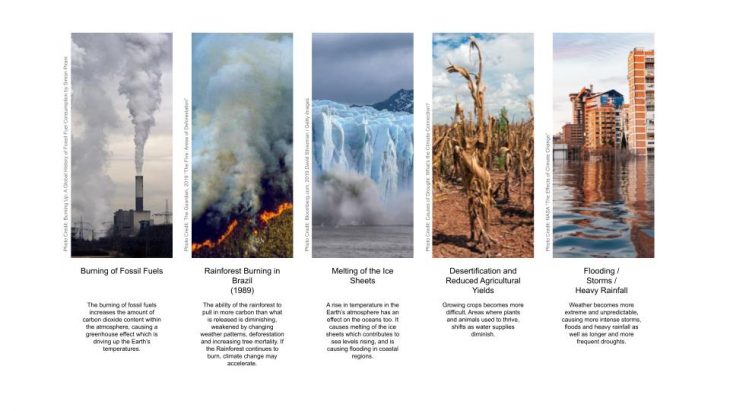
The Anthropocene describes the current geological epoch and focuses on human action as the only hegemonic force on Earth. Theorists have questioned the credentials of this term, looking to other ‘-cenes’ that better describe the current events. Terms such as ‘Capitalocene’ by Jason Moore, focuses on capitalism being the central pillar to the problems. Donna Haraway discards the centrality of man and even goes beyond man’s lifespan by looking at all species playing an important role in the ‘Chthulucene’.
There is a large accumulation of these ‘-cene’ words which have been synthesized and recorded, however this paper looks at the words that most relate to architecture and the changing climate.  These are:
These are:
- Anthropocene
- Capitalocene
- Chthulucene
- Plasticene
- Technocene
- Biocene
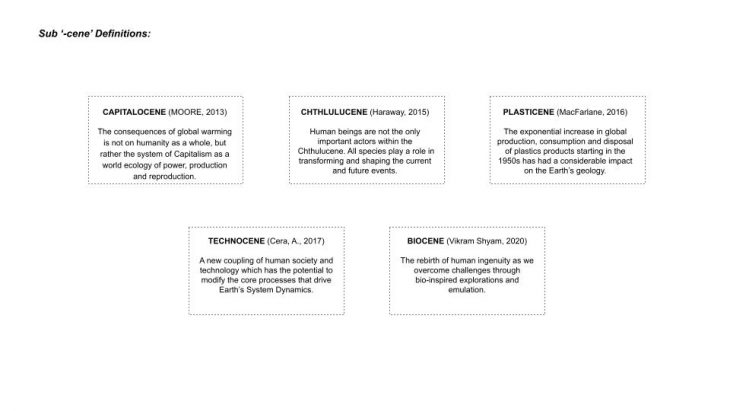
// KEY QUESTIONS
- Can each ‘-cene’ be used independently to identify and understand the characteristics of a project?
- How much of a project can we understand by using each ‘-cene’ individually?
The start of the Anthropocene is still a debated topic among geologists and scientists. However, there is a large inclination towards the invention of agriculture-related activities which led to a sharp rise in CO2 concentrations and methane gas in the atmosphere. In order to understand the full complexity of the intentions of each era over time, the following eras and respective projects were chosen:
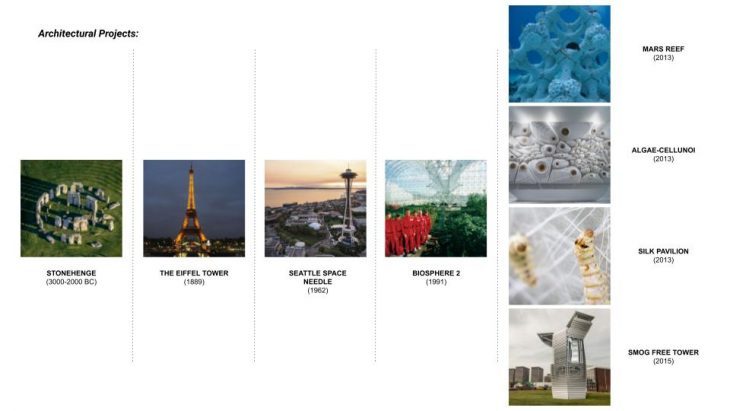
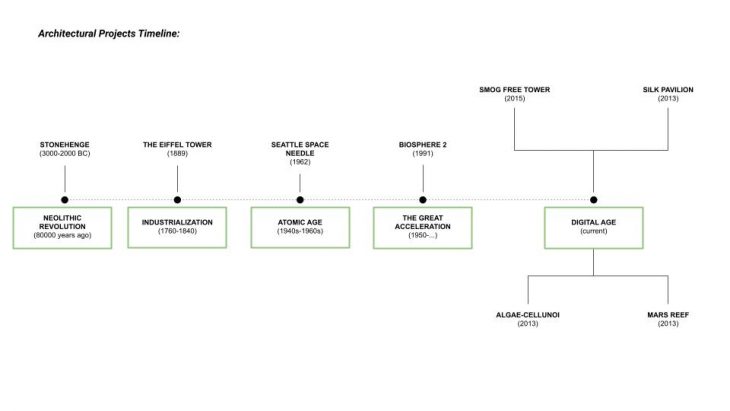
Now that each project is stated and described, each is further defined through the lens of the Anthropocene. Below, each project’s profile title is translated according to the Anthropocene lens:
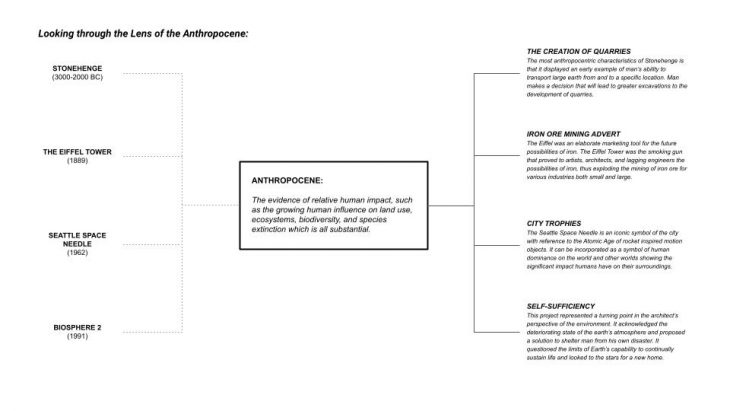
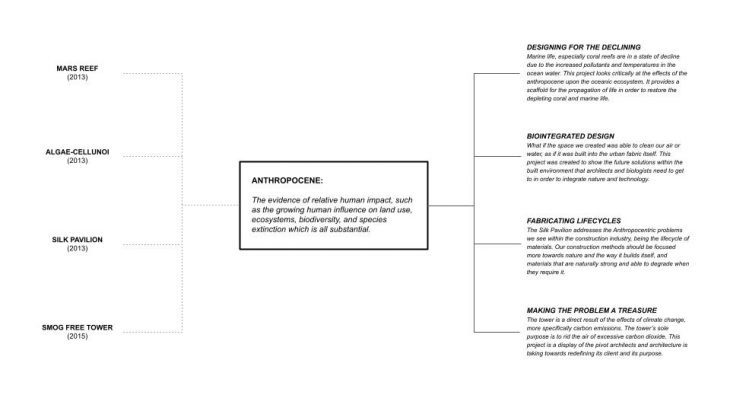
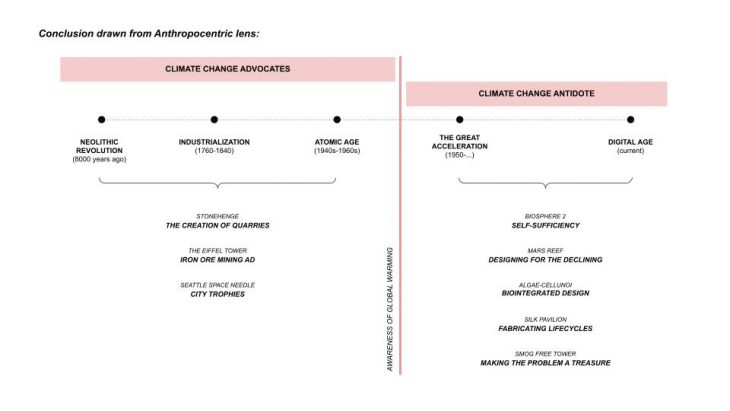
By looking at the results through the lens of the Anthropocene, a conclusion can be drawn. The projects that are located before the 1950s, and during the time of invention are architecturally built without the future in mind, and as a result they fall within the category of projects that act as advocates towards climate change. The projects after the 1950s, the age at which there was a bit more understanding of the effects of climate change, are designed with an understanding of these effects. As a result, these projects are seen as antidotes.
// HYPOTHESIS
By using multiple ‘-cene’ lenses to understand a project, there is a better contribution to the understanding of the Anthropocene.
// METHOD
By building project’s profile using lenses separately and then comparing this to a profile built using multiple lenses, we can understand the limitations of each lens. In the next step, each project is defined through the other lenses, being Capitalocene, Chthulucene, Technocene, Plasticene and Biocene.
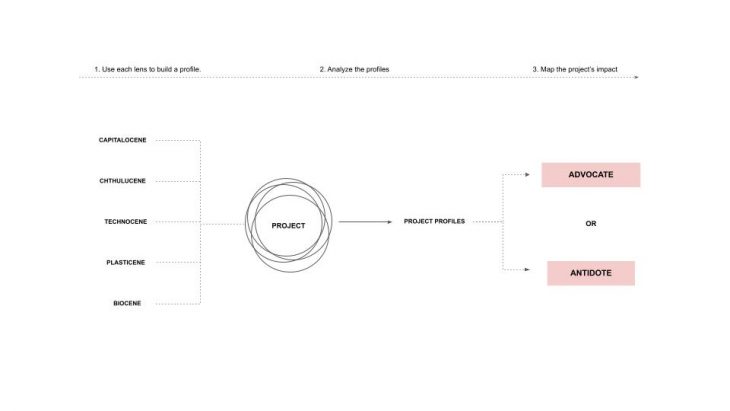
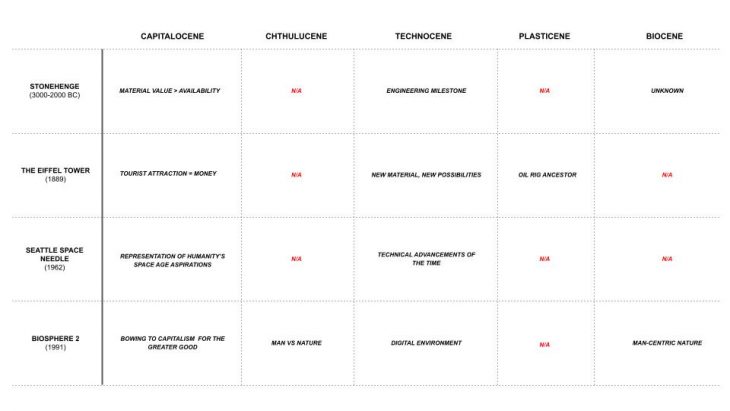
By looking at these projects through the lenses, a conclusion can be drawn. It’s difficult to categorize the projects over a multiplicity of scales when these problems weren’t realized within society yet. However, when using the available information to map the profiles, another difficulty arises, this being the line between advocate and antidote begin to blur.
Here the projects have been arranged not based on their origin based in time, but rather based on their relevance to advocacy or antidote:
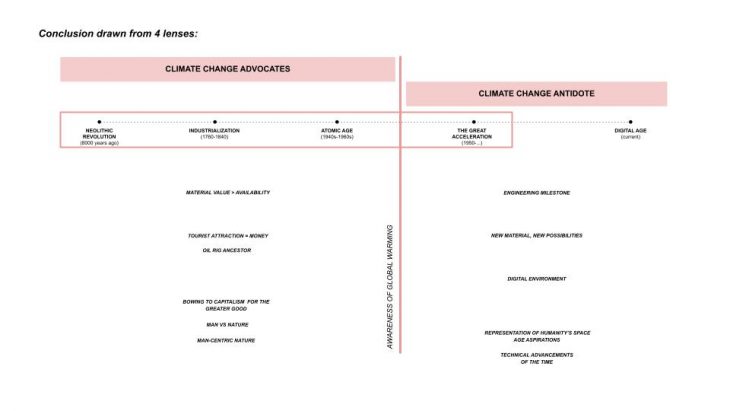
Once the titles are linked back to the projects, the line of climate change awareness that once defined the boundary becomes less pertinent as projects before and after this line carry both traits of advocacy and antidote.
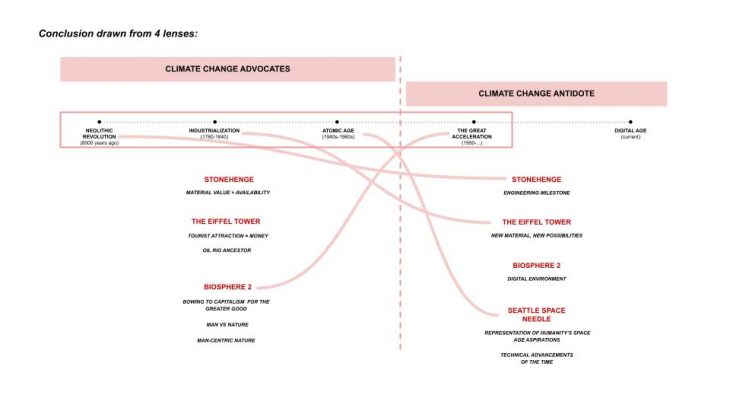
The same method was used for the projects in the digital age. Perhaps focusing on one era with multiple lenses will bring more definitive results by shedding a focused light on the profile of the project.
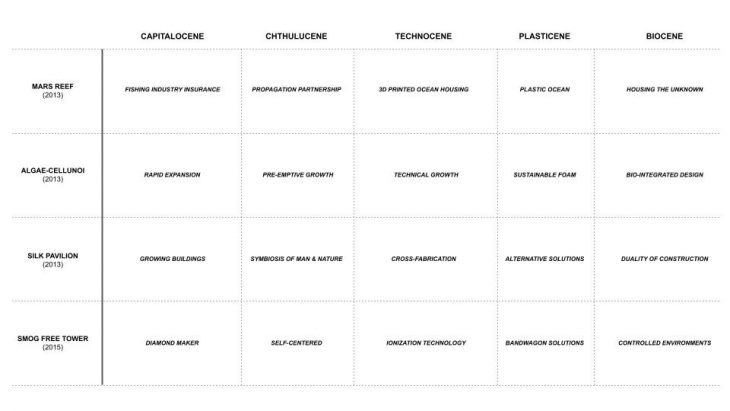
After detailing each project’s profile, we again plot the titles according to their relation to advocate and antidote:
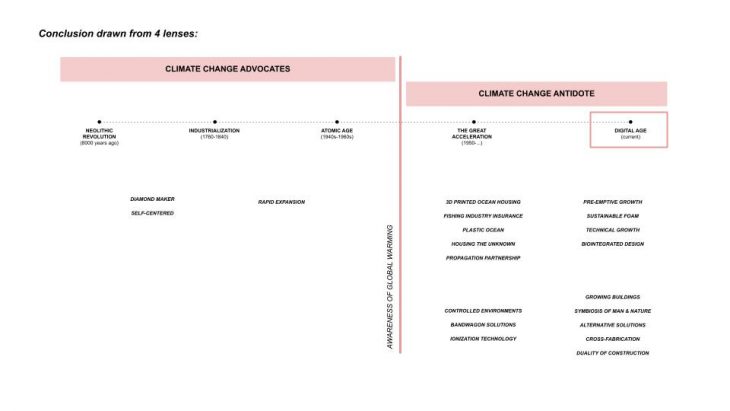
Even though all of these projects were conceived in the digital age, there is still a skew; however, the skew is not as drastic as the previous exercise. Most of these projects still heavily fall towards climate change antidotes, and this is evident due to the well defined profile.
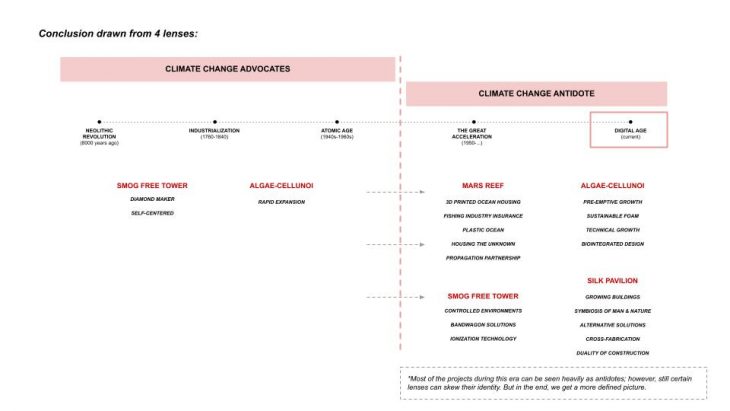
// CONCLUSION
Though the lines are slightly blurred, it is still evident that the projects after this period lean towards antidotes rather than advocacy. By using multiple lenses, this could be confidently evaluated due to the accurate resolution of each project’s profile. Therefore, one can conclude that past, present and future projects need to be seen through multiple ‘-cene’ lenses to understand the role it plays within its context.
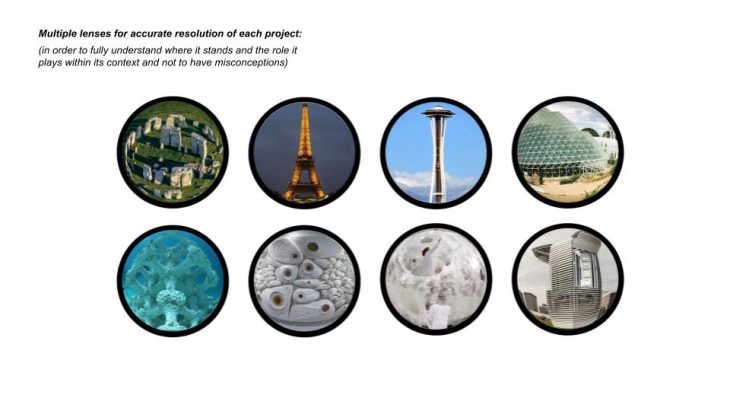
Complete Incompleteness of the ‘-cene’ is a project of IAAC, Institute for Advanced Architecture of Catalonia developed in the Master in Advanced Architecture 2019/21 by:
Students: Ilaena Mariam Napier & Eve Nnaji
Faculty: Jordi Vivaldi & Manuel Gausa